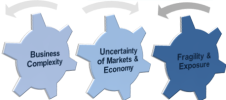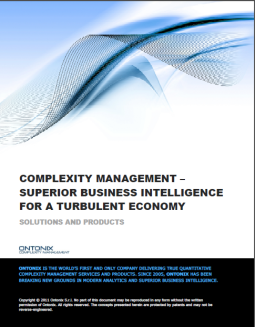Revealed: the capitalist network that runs the world – New Scientist
Friday, 27 February, 2015 Leave a comment
A timely reminder and some useful, supplementary, information! Don’t be deceived… https://www.youtube.com/watch?v=c7E9SUwlooE
Get "fit for randomness" [with Ontonix UK]
I recently wrote “” and have been boring regular readers about complexity and the threat of excessive complexity, particularly when the inter-connections are “closely coupled” (see below). Amongst others, the World Economic Forum have attempted to highlight the issues.
Financially “influential” firms SHOULD BE, as they have historically been, sources of “systemic resilience”. Instead, in a turbulent, debt-laden, global economy they can, effectively, act as “superspreaders”…hubs of systemic risk:
AS PROTESTS against financial power sweep the world this week, science may have confirmed the protesters’ worst fears. An analysis of the relationships between 43,000 transnational corporations has identified a relatively small group of companies, mainly banks, with disproportionate power over the global economy.
The study’s assumptions have attracted some criticism, but complex systems analysts contacted by New Scientist say it is a unique effort to untangle control in the global economy. Pushing the analysis further, they say, could help…
View original post 159 more words

 In the intervening period a great deal has changed…not necessarily for the better. But too much has remained the same. As I read recently “Nowadays, competition is mainly taking place between business models rather than just between products and services…”. It is true.
In the intervening period a great deal has changed…not necessarily for the better. But too much has remained the same. As I read recently “Nowadays, competition is mainly taking place between business models rather than just between products and services…”. It is true. 









